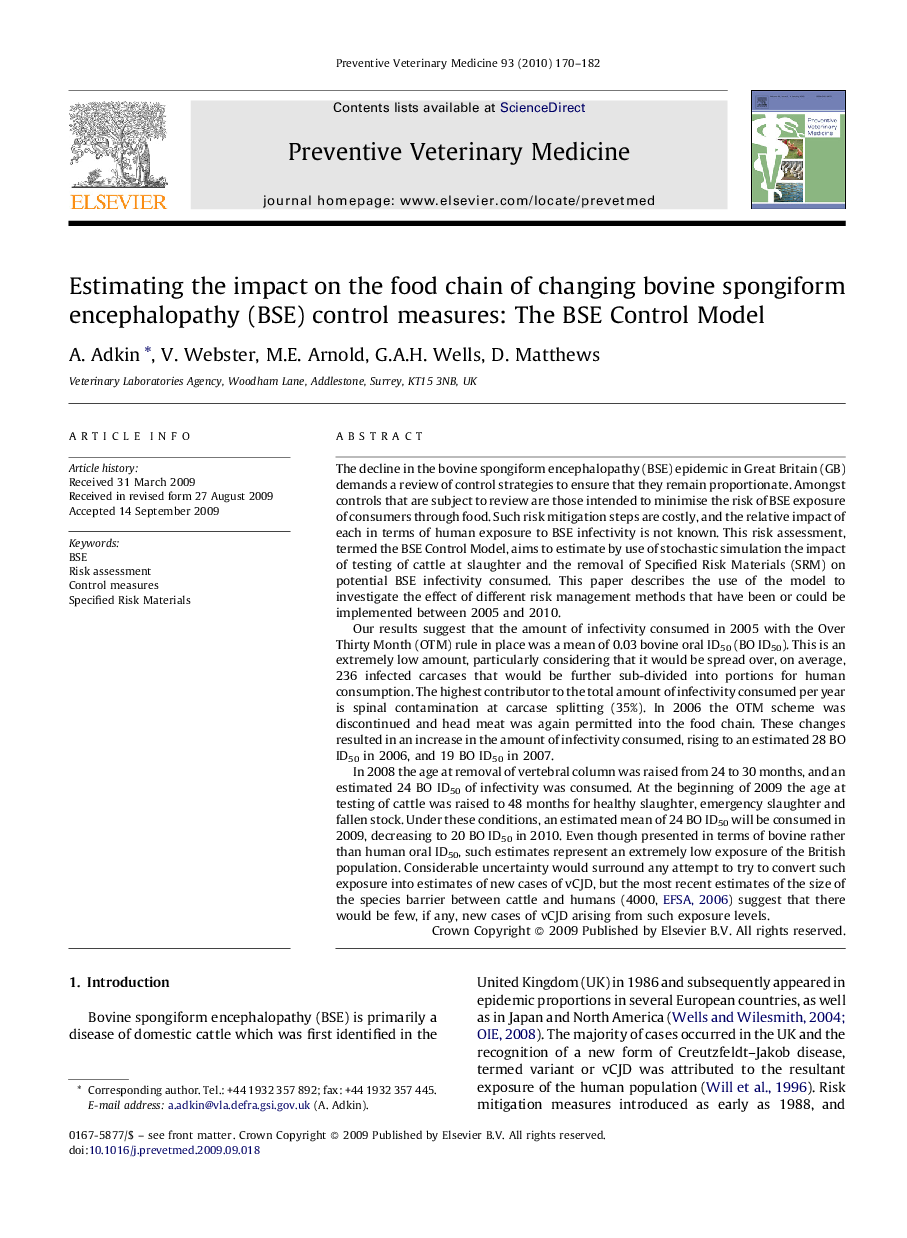| کد مقاله | کد نشریه | سال انتشار | مقاله انگلیسی | نسخه تمام متن |
|---|---|---|---|---|
| 2453105 | 1554205 | 2010 | 13 صفحه PDF | دانلود رایگان |

The decline in the bovine spongiform encephalopathy (BSE) epidemic in Great Britain (GB) demands a review of control strategies to ensure that they remain proportionate. Amongst controls that are subject to review are those intended to minimise the risk of BSE exposure of consumers through food. Such risk mitigation steps are costly, and the relative impact of each in terms of human exposure to BSE infectivity is not known. This risk assessment, termed the BSE Control Model, aims to estimate by use of stochastic simulation the impact of testing of cattle at slaughter and the removal of Specified Risk Materials (SRM) on potential BSE infectivity consumed. This paper describes the use of the model to investigate the effect of different risk management methods that have been or could be implemented between 2005 and 2010.Our results suggest that the amount of infectivity consumed in 2005 with the Over Thirty Month (OTM) rule in place was a mean of 0.03 bovine oral ID50 (BO ID50). This is an extremely low amount, particularly considering that it would be spread over, on average, 236 infected carcases that would be further sub-divided into portions for human consumption. The highest contributor to the total amount of infectivity consumed per year is spinal contamination at carcase splitting (35%). In 2006 the OTM scheme was discontinued and head meat was again permitted into the food chain. These changes resulted in an increase in the amount of infectivity consumed, rising to an estimated 28 BO ID50 in 2006, and 19 BO ID50 in 2007.In 2008 the age at removal of vertebral column was raised from 24 to 30 months, and an estimated 24 BO ID50 of infectivity was consumed. At the beginning of 2009 the age at testing of cattle was raised to 48 months for healthy slaughter, emergency slaughter and fallen stock. Under these conditions, an estimated mean of 24 BO ID50 will be consumed in 2009, decreasing to 20 BO ID50 in 2010. Even though presented in terms of bovine rather than human oral ID50, such estimates represent an extremely low exposure of the British population. Considerable uncertainty would surround any attempt to try to convert such exposure into estimates of new cases of vCJD, but the most recent estimates of the size of the species barrier between cattle and humans (4000, EFSA, 2006) suggest that there would be few, if any, new cases of vCJD arising from such exposure levels.
Journal: Preventive Veterinary Medicine - Volume 93, Issues 2–3, 1 February 2010, Pages 170–182